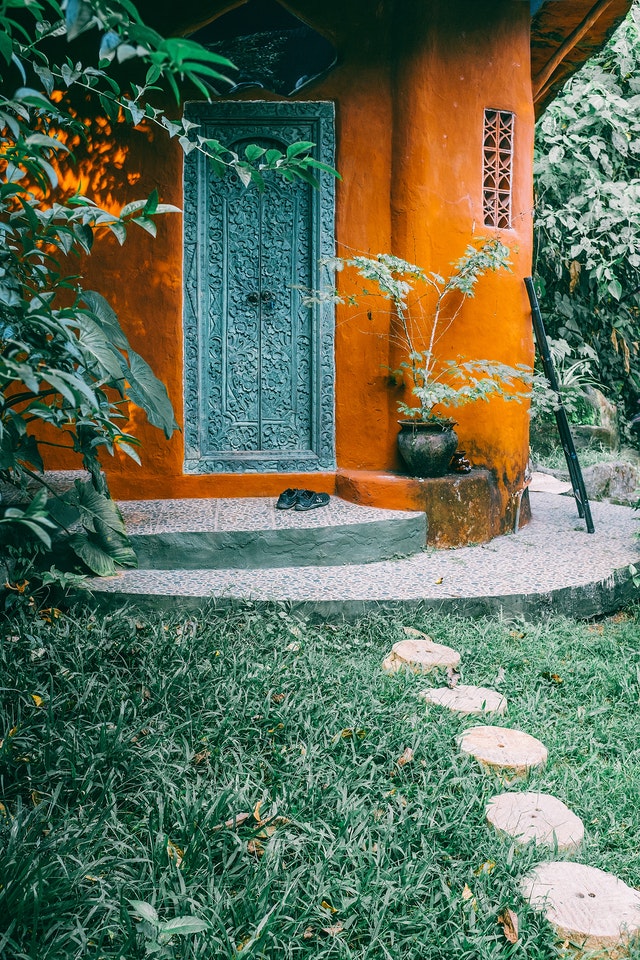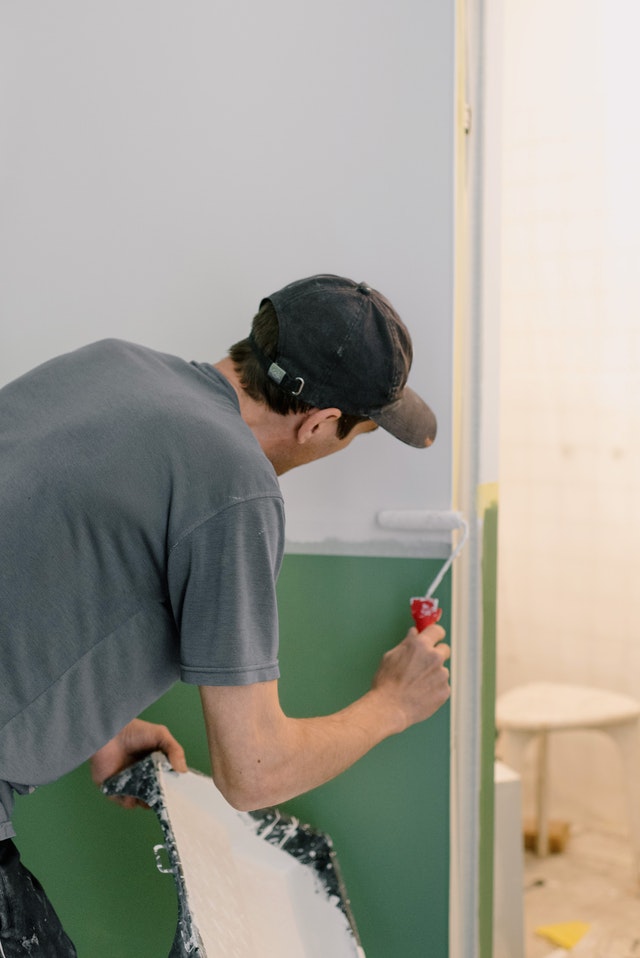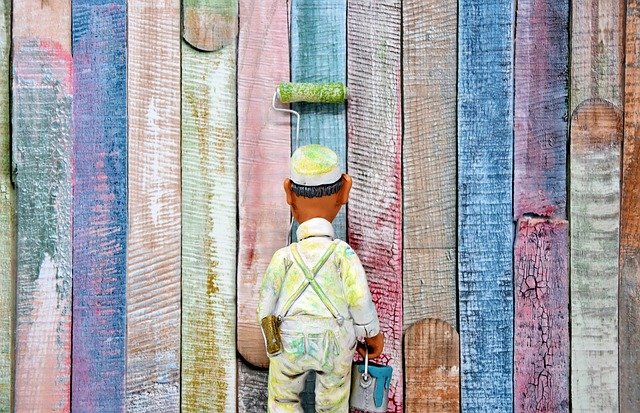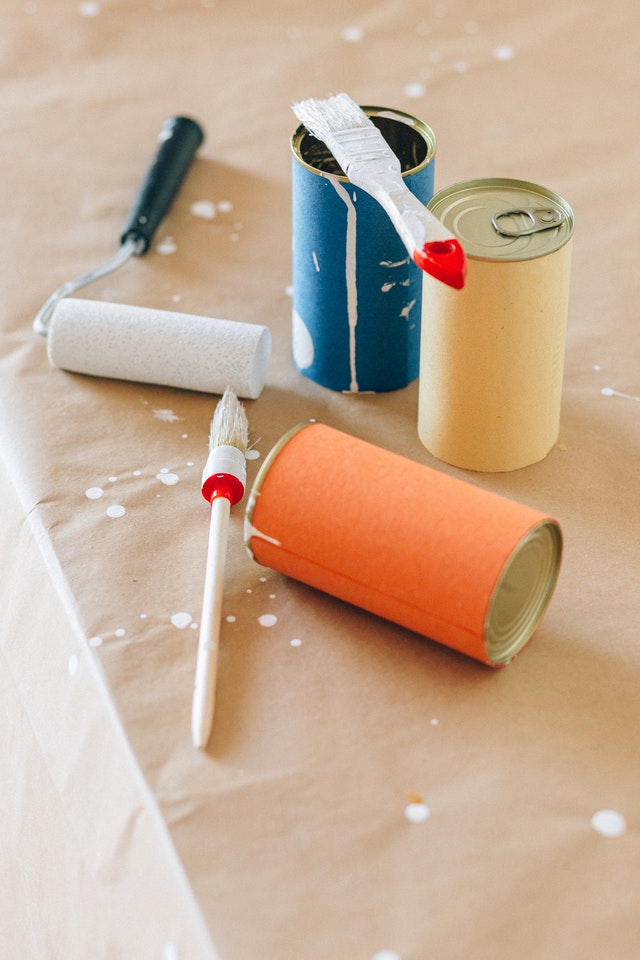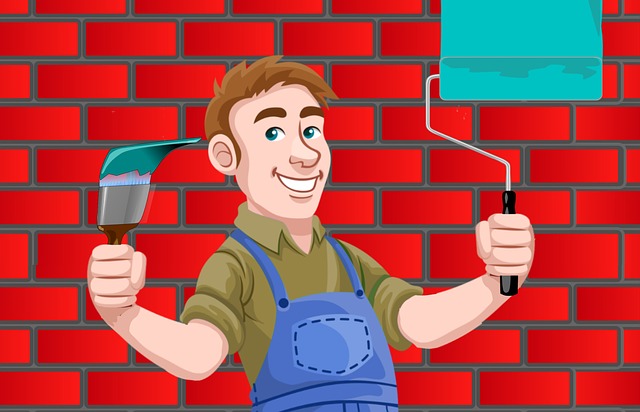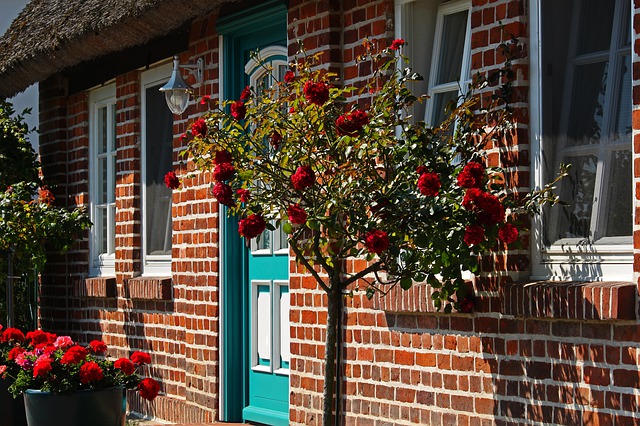
Brick And Stone Textures
This is an excerpt from the Book called “Painting Houses & Gardens” by Richard Taylor. Continue reading to learn more about Brick And Stone Textures, thanks to the author.
The majority of houses and homes have either stone, brick, or wood as their external building materials. These surfaces all have one particular element in common when it comes to recording them with watercolor paint-the specific use of water.
Brick and stone textures can be created by combining a number of watercolor techniques. First, it is necessary to apply plain water to the area of paper where you intend to create an area of texture. The color is then dropped onto the wet paper using a medium-size brush-Raw Sienna is useful for brickwork and Raw Umber for stone. This paint will immediately run and bleed into the wet paper. Next, choose a slightly stronger color (this may well be a mix); for brick choose Burnt Sienna, for stone use Burnt Umber and French Ultramarine. Drop this color onto the now damp paper. Some of the paint will blend and mix with the paint that is already on the paper and some will sit on the water and dry separately as the water evaporates. This will produce an uneven and slightly textured surface that you can start to work onto.
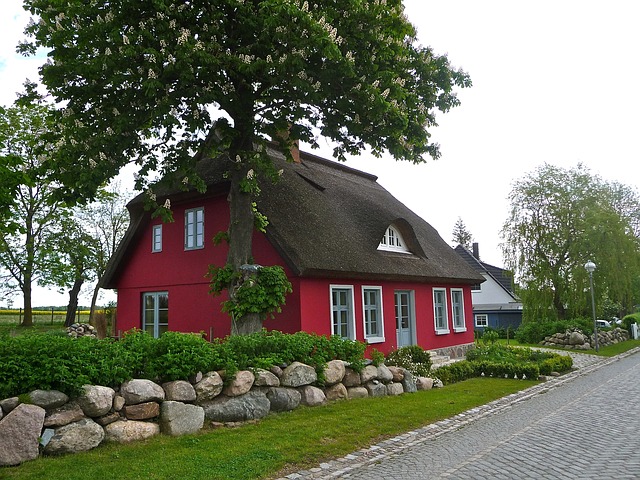
The textures in brickwork are best created with a free flow of color and water. Raw Sienna is applied to wet paper and then Burnt Sienna applied unevenly to the paper while it is still damp. This technique creates the basic texture. The shape of the bricks can then be painted onto dry paper to give definition to the wall.
Georgian House
9½ × 12½ in (24 × 32 cm)
It is not possible, nor desirable, to paint every brick in a wall, so the artist bus to “suggest” the texture. Selecting a few negative shapes to represent bricks and painting a few specific shapes with a small brush will help to create the required effect.
The principle of allowing colors to run and blend on damp paper is the same for both brick and stone. With stone, however, the shapes are often irregular, usually appearing lighter than the gaps between. Paint the gaps with a small brush and a mix of French Ultramarine and Burnt Umber.
Corner House
11 × 6 in (28 × 15 cm)
Stone buildings can look particularly interesting when viewed from a corner, as the corner stone’s often create an irregular pattern. A “flash” of light along the edge of the corner stone’s adds to the three-dimensional effect; this can be created by either leaving plain white paper or allowing the Raw Umber underneath to show through.
Adding Detail
When the paper is fully dry some specific details can be painted to identify the building materials that you are recording. For brickwork you can use mixtures of Burnt Sienna and Burnt Umber to paint individual bricks, leaving the underwash to act as the mortar color. To prevent the bricks looking too rigid, the process may be repeated at any stage, adding color to wet paint and allowing it to bleed. For stone this approach can be reversed, “drawing” the shapes of the stones with a small brush, since the gaps between the stones will often be darker and shadowed. As before, you can drop water on at any stage to improve the appearance of the texture.
Painting Wood Texture
Wood offers one of the most endearing of building materials for the watercolor painter as it has the potential to take on a wide range of textures, tones, and colors, from pristine whitewashed timber cladding to rough and rotting planks.
To paint plain untreated wood effectively in watercolor it is necessary to consider the whole area of wall or section of planking first, before thinking about the details. The area of wood should be dampened with a large brush and then a wash of Raw Sienna mixed with a touch of Raw Umber applied. This mixture will bleed onto the damp paper and eventually dry, leaving a few watermarks, which are useful when painting textured subjects. When the paint has dried, a darker color can be added using Burnt Umber with a touch of Sap Green-this mix helps to suggest dampness, mold, and other qualities of natural wood. Using a medium brush, apply this roughly over the underwash using broken brush strokes, allowing the base color to show through.
This mixture of warm and cool colors is best used for painting raw, untreated wood.
Derelict Garden Shed
8½ × 7 in (22×18cm)
The dampness found in the wood of old garden sheds requires the addition of blue and green paints to the planks near to the ground.
Painting Plank Shadows
When the paint has dried, a few of the shadows that occur underneath overlapping planks can be painted in with a small brush and a mixture of Burnt Umber and French Ultramarine.
The idea is to almost “draw” a line directly under the plank and then “pull” the paint downward to graduate the shadow. It is important not to paint all the planks, however-suggestion is the key to success.
Timber-Clad House
9 × 11 in (23 × 28 cm)
Whitewashed wood planking still casts shadows as the planks overlap. Do not try to paint the edges of every piece of wood, but concentrate on achieving a suggestion of the overall look of the fabric.
The first stage in painting raw wood is to apply a wash of Raw Sienna mixed with Raw Umber. When dry a darker wash of Burnt Umber mixed with Sap Green can be applied, using broken brush strokes to allow the underwash to show through. Finally, a small brush helps to paint a thin line to suggest shadows under the overlapping planks.
Graduated shadows underneath the lower edges of the upper planks show that the planks overlap.
Painting Glass
Glass is one of the most challenging of surfaces to paint as, with the exception of stained glass, it holds no color of its own and is only visible because of the colors that it reflects.
The key questions to ask before painting windows are what tone and strength of color should you use? This will depend not only on the time of day, but on the weather. As most of the light reflected from windows comes directly from the sky you have-overcast, bright, or even stormy!
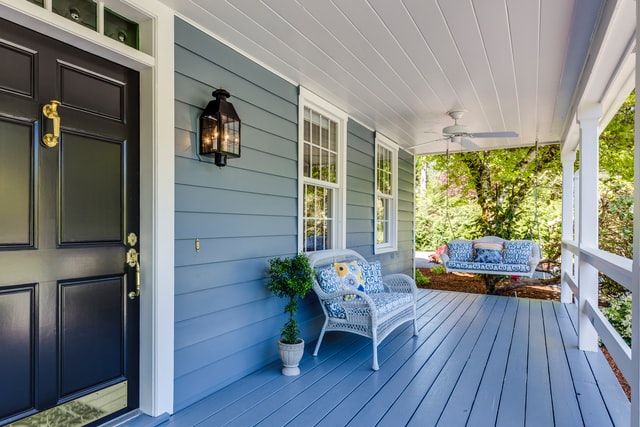
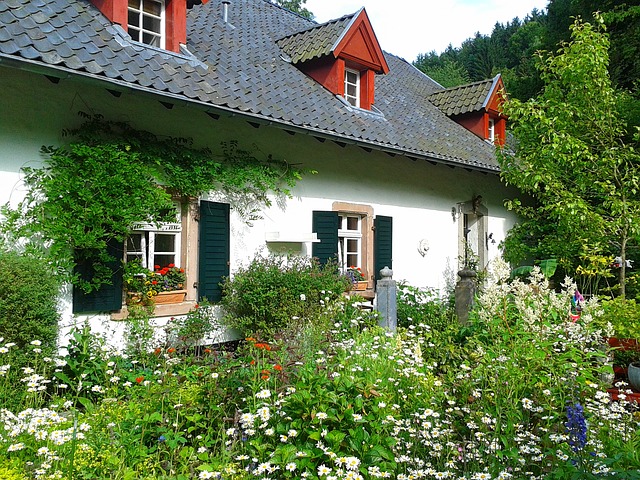
I rarely use Payne’s Gray for windows as it contains black, which has the effect of “flattening” colors, an effect that you certainly do not want when painting reflective surfaces. A neutral gray made of French Ultramarine mixed with Burnt Umber makes a useful basic window reflection color. These colors work well with windows that often have curtains set just behind them, preventing outsiders from seeing the exact content of the rooms.
A neutral tone is often suited for painting glass and a combination of French Ultramarine or Cobalt Blue and Burnt Umber is a particularly effective combination. It is important to paint onto dry paper to allow a few “flashes” of pure white paper to act as highlights or reflections.
Gazebo
10 ½ × 8 in (27 × 20 cm)
Colors viewed through glass take on a muted appearance. To paint these, simply use softer or more diluted versions of the particular colors, painting them around a few flashes of pure white paper.
When painting rounded glass it is important to vary the tone. Load a medium brush with paint and use the tip to paint the darker areas, then use the edge of the brush to pull the paint around in a circular motion.
Large Areas Of Glass
However, conservatories and larger glass structures such as greenhouses cannot be painted quite so easily. To achieve the highlights and reflections needed in these cases I advise that you work onto dry paper, painting your chosen tones of gray around a series of white flashes of unpainted paper. Even if you cannot actually see them, they will help to create the illusion of reflected light, informing viewers that they are looking at glass.
Large panes of glass that are not in direct sunlight will allow you to see through them, although any objects you can see will appear a little diffused. The best way to paint these objects is to soften the edges by painting onto pre-dampened paper, giving the impression that you are looking at them through another surface. As is so often the case with watercolor painting, you are not painting the actual glass but the objects seen through it.
Conservatory
12 × 11 in (30 × 28cm)
The structures viewed through glass conservatories or similar buildings with large areas of glass are painted in the same way as colors seen through glass. Simply paint a lighter version around white flashes, using broken color to suggest large areas of glass.
Painting Tiles
Painting tiles is not so different from brick or wood. The key difference is that there is probably a greater variety of tiles. All tiles are placed in a way that will create some curious shapes and shadows, making a small section of tiles sometimes worthy of a study in its own right.
Pantiles, for example, are particularly popular in warmer climates and create some wonderfully rhythmic patterns as light and shadows fall across their curved ridges. To paint these apply a wash of Raw Sienna across the tiled area using broken brush strokes, ensuring that you leave a few “flashes” of white paper showing to represent the highlights. Then apply a mixture of Burnt Sienna, again using broken brush strokes to create the bulk of the terracotta color. For the shadows mix Burnt Sienna, again using broken brush strokes to create the bulk of the terracotta color. For the shadows mix Burnt Umber and French Ultramarine and, working onto dry paper, “touch in” the darkest areas underneath the tiles with a small brush.
Flat tiles, however, require a slightly different approach. While the colors are similar, only faint shadows can be detected on the tiles’ overlap. These are best painted by running a thin line of paint underneath the overlap and “washing” it gently into the underlying tile.
Pantiles
7 × 4 ½ in (18 × 11 cm)
The rhythmic patterns created by overlapping pantiles are always a delight to record. The interplay of light and shadows are their key features.
Raw Sienna is applied to dry paper using a medium brush and broken brush strokes. Next Burnt Sienna is applied-the Raw Sienna underwash will allow this to glow with warmth. Finally, the shadows are picked out with dark paint and a small brush.


